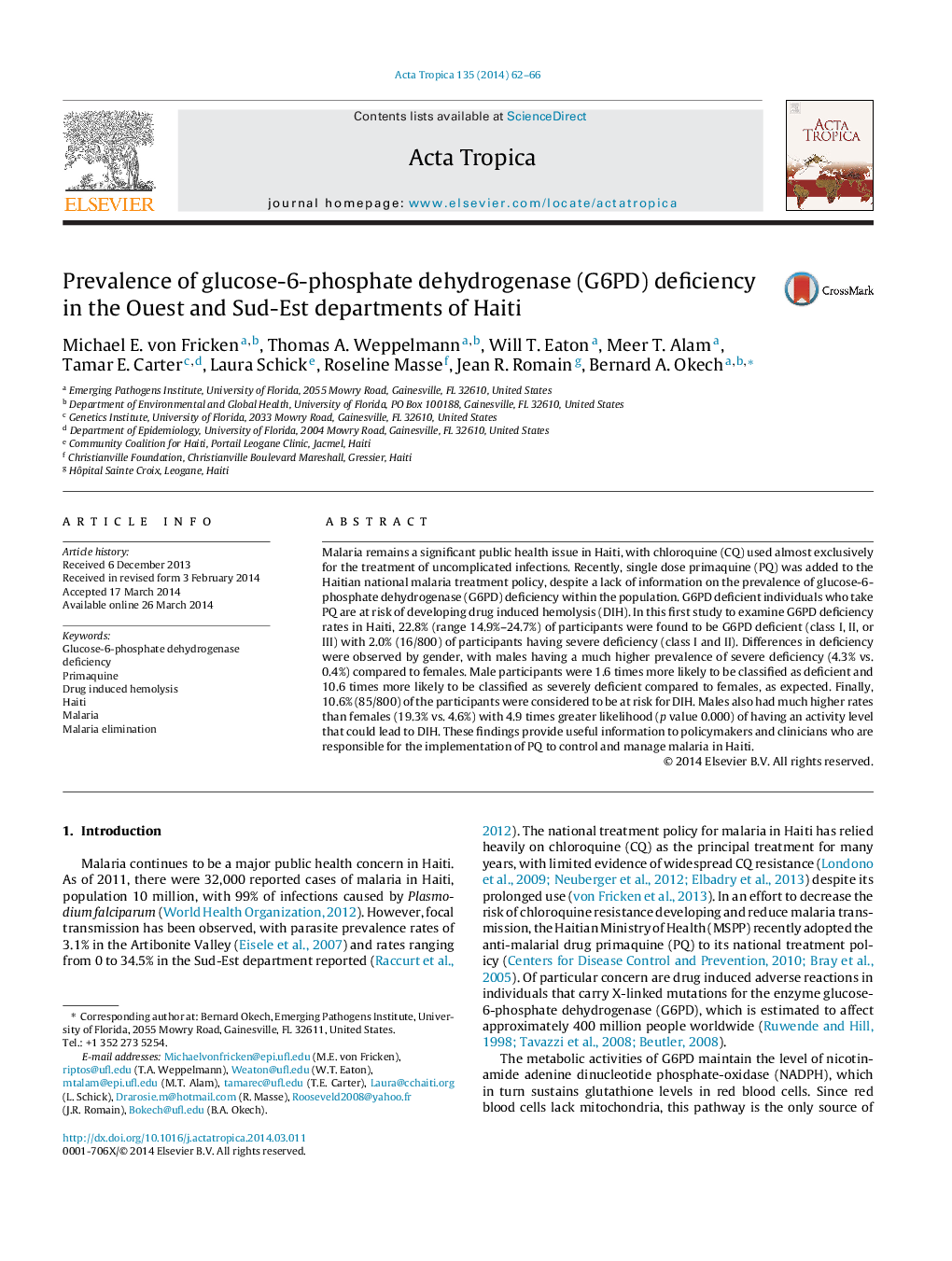| کد مقاله | کد نشریه | سال انتشار | مقاله انگلیسی | نسخه تمام متن |
|---|---|---|---|---|
| 3393833 | 1592788 | 2014 | 5 صفحه PDF | دانلود رایگان |

• Glucose-6-phosphate dehydrogenase (G6PD) deficiency is prevalent in Haiti.
• G6PD deficiency in males was found to be significantly higher than females.
• Roughly 11% of our participants were classified as having moderate to severe G6PD deficiency (<30% of the “normal” population).
• These findings should be taken into consideration when fine tuning malaria treatment policies in Haiti.
Malaria remains a significant public health issue in Haiti, with chloroquine (CQ) used almost exclusively for the treatment of uncomplicated infections. Recently, single dose primaquine (PQ) was added to the Haitian national malaria treatment policy, despite a lack of information on the prevalence of glucose-6-phosphate dehydrogenase (G6PD) deficiency within the population. G6PD deficient individuals who take PQ are at risk of developing drug induced hemolysis (DIH). In this first study to examine G6PD deficiency rates in Haiti, 22.8% (range 14.9%–24.7%) of participants were found to be G6PD deficient (class I, II, or III) with 2.0% (16/800) of participants having severe deficiency (class I and II). Differences in deficiency were observed by gender, with males having a much higher prevalence of severe deficiency (4.3% vs. 0.4%) compared to females. Male participants were 1.6 times more likely to be classified as deficient and 10.6 times more likely to be classified as severely deficient compared to females, as expected. Finally, 10.6% (85/800) of the participants were considered to be at risk for DIH. Males also had much higher rates than females (19.3% vs. 4.6%) with 4.9 times greater likelihood (p value 0.000) of having an activity level that could lead to DIH. These findings provide useful information to policymakers and clinicians who are responsible for the implementation of PQ to control and manage malaria in Haiti.
Figure. Histogram of G6PD activity (U/g Hgb) by gender. The distribution of G6PD activity (U/g Hgb) appears by gender with two reference lines denoting 10% residual activity and 60% residual activity (red dashed lines), and dotted blue line for 30% residual activity (risk of drug sensitivity).Figure optionsDownload as PowerPoint slide
Journal: Acta Tropica - Volume 135, July 2014, Pages 62–66